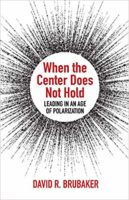
Last fall, I wrote about three consistent traits of effective congregational and organizational leaders—whether lay or ordained. I’ve also noticed that healthy congregations share three characteristics that over time produce effective internal community and external ministry. The marks of healthy congregations (of all sizes) that I’ve observed are as follows:
1. Healthy Congregations Have a Clear and Shared Center.
As I noted in my article on the importance of shared identity and purpose for a congregation, “Identity is vital not only for internal unity but also for our engagement with others outside of our congregations.” A shared purpose is equally important, as it provides a “social glue” for members who can work or serve together even when their beliefs are not entirely congruent.
In practical terms, this means that congregational leaders need to pay more attention to the “center” or core of the congregation than they do to maintaining the boundaries. A congregation’s core is often expressed through its written statements of vision, mission and values—and even more so, is lived out through its behaviors. A congregation whose stated mission is to “welcome ALL who wish to worship God and serve others” will create welcoming norms and practices that help all who come to indeed feel welcomed.
2. Healthy Congregations Have Clear but Permeable Boundaries.
While healthy congregations focus far more on their core than on their periphery, they are also aware that there are boundaries that determine what it means to “belong” to the congregation. A completely undefined congregation will have no meaningful boundaries, while at the other extreme a “cult” will have very rigid boundaries. A healthy congregation, by contrast, is clear about membership expectations but also anticipates that participants will both come and leave. It thus creates rituals to welcome those who come and to recognize those who leave.
Aside from the formal “membership standards” that exist for most congregations, the far more important informal “congregational culture” shapes the behavior of members and creates a unique congregational body. Congregational culture is determined by the geographic location, the founding personalities, the historic experiences, and the denominational affiliation of the congregation—along with the composition of its current membership. Creating a welcoming culture will usually require a deliberate decision on the part of congregational leaders to look critically at the congregation’s culture and make adaptive changes.
3. Healthy Congregations Focus Outward Not Just Inward.
While effective congregational leaders monitor their congregation’s culture and model an attitude of welcoming, they also pay attention to the multiple environments in which the congregation is located. Most important is the local community in which the congregation is located, and the strengths and challenges of that community. A healthy congregation recognizes that it is both a reflection of and a resource to the community where it resides, and its leaders invest time in understanding and serving that community.
It’s hard to overstate the importance of an outward focus for a local congregation. The most effective antidote to a destructive (high-level) conflict is to adopt an outward focus. Much like an individual, a congregation that is only internally-focused will inevitably identify multiple flaws that sometimes appear impossible to overcome. There are times to adopt an inward focus (such as during a culture review process), these times must be balanced by a healthy dose of outward focus as well.
What Does This Look Like in Practice?
While these three marks of a healthy congregation are easy to describe in the abstract, what do they look like in practice? I offer these examples of living out these principles from two congregations where I’ve been a member over the last 24 years.
A Mennonite congregation in Virginia invested time in clearly defining its vision and its shared beliefs and values. It now welcomes those who are attracted to its clear identity and purpose to accompany the congregation without any immediate pressure to become members. Once a year, however, a gentle invitation is extended to those who wish to “explore membership” to join the pastors over pizza after a worship service. Newcomers are drawn to the invitation to walk with the congregation without undue pressure to “make a decision,” and a surprising number end up deciding to become members each year.
A Presbyterian congregation in Arizona organized a steering committee two decades ago to initiate a Christian community-development organization to serve the broader community. While the governing board initially consisted only of Presbyterian members, over time some 10 other area congregations joined the effort and provided members to serve on the board. Several community ministries emerged to serve identified needs in the community, including a hot lunch program and a neighborhood-based center. The years when the congregation focused outward (on its community) were the healthiest years of that congregation’s life-cycle.
Becoming a Healthy Congregation
Many congregations lack a clear identity and purpose, do not have permeable boundaries, and fail to focus outward. For those congregations, what can be done? Often what is most needed is a “Holy Conversation,” a strategic planning process that is truly a spiritual practice for congregations (as Gil Rendle and Alice Mann describe in their book by this title).
In order to prepare for such a holy conversation, lay and clergy leaders need to agree on the importance of entering into an intentional process of visioning and identity clarification. They also need to give priority to their own participation in and (when appropriate) leadership of such a process.
Healthy congregations are not in surplus these days, but they do exist. We find them wherever congregational leaders have become intentional about the need to clarify identity and purpose and have modeled an outward focus for congregational members. If you would like assistance in planning such a process, contact one of the members of the Congregational Consulting Group for information about coaching or consulting services.
David Brubaker has consulted with organizations and congregations in the U.S. and a dozen other countries on organizational development and conflict transformation. He is the author of Promise and Peril, on managing change and conflict in congregations, and When the Center Does Not Hold, on leading in an age of polarization. David recently retired from his role as Dean of the School of Social Sciences and Professions at Eastern Mennonite University, and is now a Professor Emeritus of Organizational Studies.


